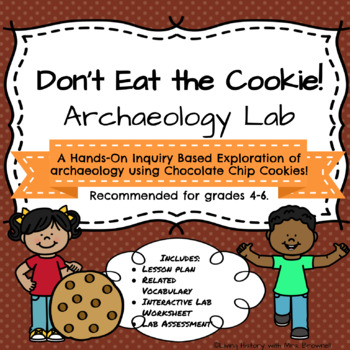Living History with Mrs Brownell
24 Followers
Grade Levels
3rd - 6th
Subjects
Resource Type
Standards
CCSSCCRA.R.1
CCSSCCRA.R.7
CCSSCCRA.R.10
CCSSCCRA.W.1
CCSSCCRA.W.4
Formats Included
- PDF
Pages
7 pages
Living History with Mrs Brownell
24 Followers
Description
This lesson is a great hands on introduction to archaeology, and can be integrated into a variety of different Social Studies and Science units. Teach your students to think like an archaeologist by participating in sketching dig sites, and artifacts, excavating artifacts, evaluating the effects of excavation on a dig site, and the effectiveness of tools used in the excavation.
What’s included in this resource:
- Teacher lesson plan
- Related vocabulary and definitions
- Interactive lab worksheet
- Lab assessment
Objectives:
- We can think like archaeologists, and use a variety to techniques to experience an archaeological excavation.
- We can explore challenges associated with archaeology.
- We can record observations of an archaeological dig site.
- We can think critically about archaeology.
Supplies Needed:
- Chocolate Chip or rainbow Chip Cookies (I recommend Chips Ahoy! Crunchy Candy Blast cookies. These are nut free, and have a variety of different colored chips for the students to “dig” out.) You will need enough for 2 cookies per child.
- Toothpicks enough for 2 for each child.
- 1 paper towel/napkin or paper plate for each child.
- Printed copies of the interactive lab and the lab assessment (pages 5-6). These can be printed double sided.
Total Pages
7 pages
Answer Key
N/A
Teaching Duration
45 minutes
Last updated Dec 8th, 2021
Report this resource to TPT
Reported resources will be reviewed by our team. Report this resource to let us know if this resource violates TPT’s content guidelines.
Standards
to see state-specific standards (only available in the US).
CCSSCCRA.R.1
Read closely to determine what the text says explicitly and to make logical inferences from it; cite specific textual evidence when writing or speaking to support conclusions drawn from the text.
CCSSCCRA.R.7
Integrate and evaluate content presented in diverse media and formats, including visually and quantitatively, as well as in words.
CCSSCCRA.R.10
Read and comprehend complex literary and informational texts independently and proficiently.
CCSSCCRA.W.1
Write arguments to support claims in an analysis of substantive topics or texts, using valid reasoning and relevant and sufficient evidence.
CCSSCCRA.W.4
Produce clear and coherent writing in which the development, organization, and style are appropriate to task, purpose, and audience.


